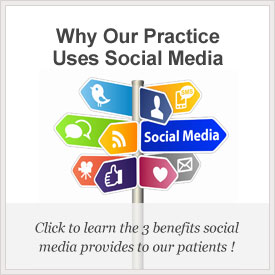Strange and Fascinating Animal Teeth

WE’RE THE EXPERTS on human teeth, but there are lots of other interesting teeth out there. You probably already know that venomous snakes have hollow fangs to inject venom when they bite, elephants have massive tusks, and sharks are constantly growing new teeth. Just for fun, let’s take a look at some of the other unusual chompers out there in nature.
Teeth Aren’t Tools…Unless You’re a Beaver
How can beavers get away with chewing through entire tree trunks with their teeth when we can’t so much as open a bottle with ours without risking permanent damage? Well, unlike humans, beaver teeth have two handy adaptations to help them with all that dental carpentry. Chewing through wood does erode their teeth, but where human enamel, once gone, is gone for good, beaver teeth just keep growing! Also, their diet is rich in iron, which turns their teeth orange and makes them more durable.
Narwhal Horns are Inside-Out Teeth
The “horns” that earned narwhals the nickname “unicorns of the sea” aren’t really horns at all. They’re teeth. Specifically, (very) elongated canine teeth, or tusks, that grow through the upper lips of male narwhals (and the occasional female). Most of the time, only the left canine tooth grows this much, but some narwhals end up with two tusks. Unlike normal teeth, they have the nerves on the outside and the hardest tissue on the inside, which makes them kind of like sensory input antennae. Wild!
What is the purpose of having spiral tusks that can grow up to nine feet in length and are covered in nerve endings? We’re still not entirely sure, except that they don’t seem to use them as spears. Instead, there is evidence that they will use them to deliver a blunt, stunning blow to tasty fish they want to eat, making them easier to scoop up. They might also use them to break through ice when coming up for air.
Crabeater Seals Don’t Use Their Teeth for What You Think
From a glance, it looks like crabeater teeth have saw blades built into their jaws. Each tooth is individually serrated, and they fit together in a sinister zig-zag line. It’s even how they got their name, for surely such impressive teeth can crack open crab shells! In fact, crabeater seals eat mostly antarctic krill, and the function of their serrated teeth is simply to work like a pasta strainer. They’ll take a big gulp of krill-filled water, then squeeze the excess water back out while the krill stay trapped inside. Tasty!
Make Sure You’re Taking Care of Your Teeth!
We might not be able to do some of the crazy things animals use their teeth for, but we still want ours to be able to last us a lifetime of smiling, speaking clearly, and chewing our favorite foods. That’s why it’s so important to keep up with daily oral health habits like brushing and flossing, and to make time for twice-yearly dental appointments!
















My daughter and I love going to see Dr Aparna Sadineni and her professional staff. We never have to wait and the staff knows us like a second family. I highly recommend this office!